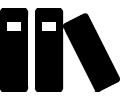

Intuitively, we all know what a sacred cow is. In practice or
by definition when was the last time you asked, “Why do we do this,
this way?” What was the trigger that created that practice or process?
Is it work you just don’t like to do?
There are lots of things you can’t stop in this world: Records
retention, charting, notifying patients, prescribed billing
requirements. However, are you doing them as efficiently as possible? Is
your EMR customized to your practice specialty? All of them can be. Are
there interfaces and efficiencies that need to be built to optimize
your systems? They may that look expensive on the front end but the
current workarounds are costing you hours and hours of wasted time on
the back end.
Sometimes you have to STOP whatever it is you are actually doing to
reflect. Do you take time, regularly, of looking and reflecting on your
current practices, processes? Do you ask the question: “Why are we doing
this?” Particularly when you’re hearing the same comments at the same
pain point over-and-over again. So, call the question: “Is this REALLY
the way it should be done?” My experience is that 80% of the time, there
is an opportunity to find a new solution. There are times (about 20%)
when you need to build a bridge and get over it. Some things cannot
change.
However, the vast majority of practices and processes could use the
“Stop It” button. The next time you reflect on your current-state, ask
yourself three questions:
When I consult a practice and witness staff members scrolling through
lists of items that are not their focus in software or online
interfaces, before reaching their area of focus or assignment I feel
their discouragement. For example; the only ICD-10 codes that should
come up on the screen should be those relevant to your specialty. Build
in the filters that make it easier for people to do their work. It takes
time on the front end, but the cost-benefit ratio is high.
In the case of the physician who stopped seeing pharma reps in the
course of her day, she identified the barriers to stopping something and
then identified a staff member who could capture samples and log them
appropriately. (which also mitigated a liability risk). As soon as she
hit the “Stop It” button, she transferred 45 minutes of her day to about
15 minutes of someone else’s day. She also successfully shifted it to a
person who wasn’t seeing patients and gave herself the opportunity to
see more patients and positively impact revenue.
To begin the process of looking for things to “stop” doing, just look
around your office for things that aren’t getting done in a timely
fashion. Are they things that need to be stopped or are there other
activities that are preventing you from getting them done. If there are
things piling up, you have to ask yourself: “What needs to be stopped?”
Is this process contributing to patient care or the bottom line? Or is
it busy work because our team does not trust each other?
If you are way behind in your charting, for example, that cannot stop. However, there are probably several things that are being done right now that should stop to afford the time to do the things that are legally required and essential for practice operations and success. Soon enough, your practice will be ADEPTSM at the new business of health care. If you need a bit of insight on the specifics, we can help.



Sign in/up with Facebook
Sign in/up with Twitter
Sign in/up with Linkedin
Sign in/up with Google
Sign in/up with Apple


Wouldn't it be a good idea to create a course?
